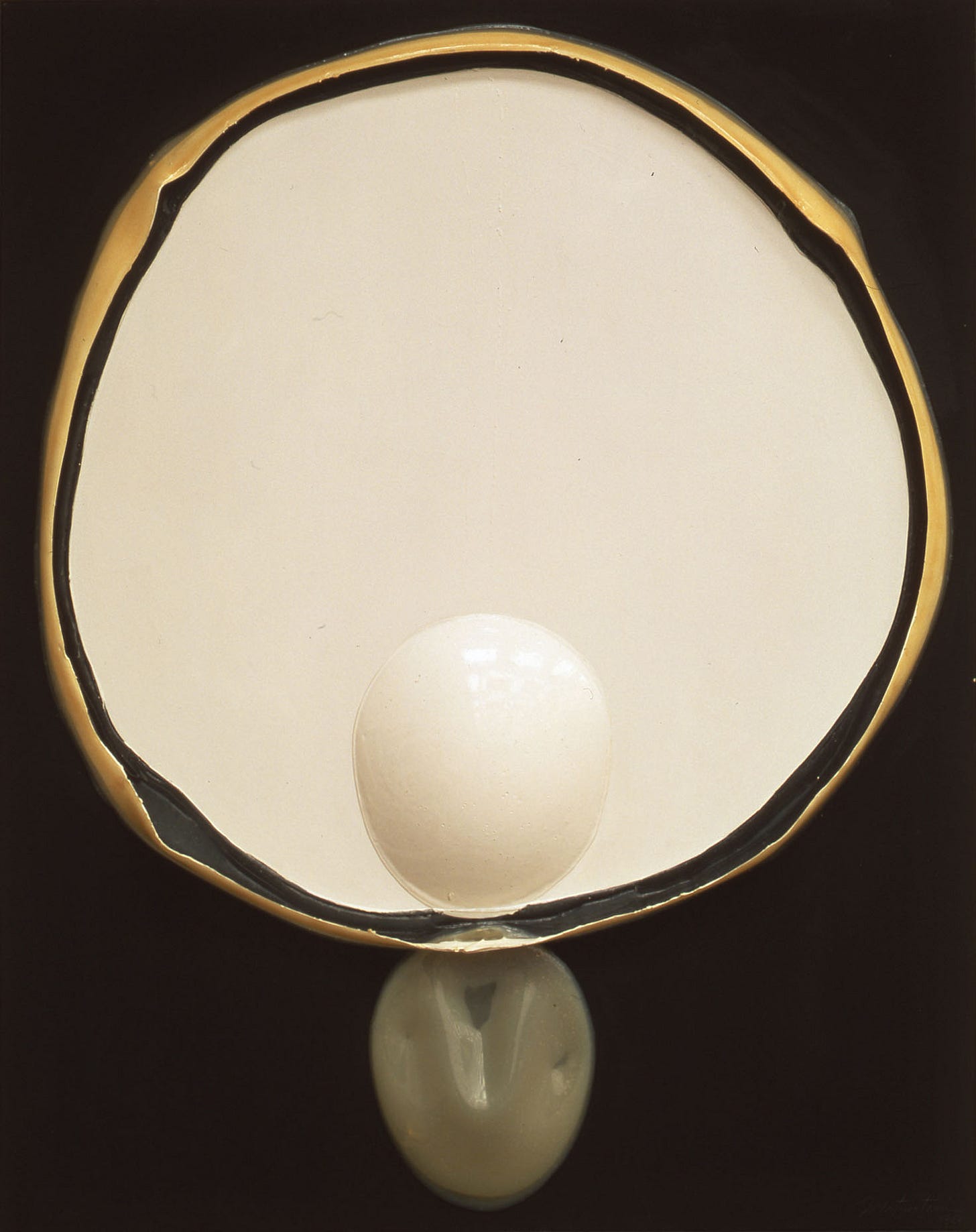Who Decides Whether Art is Good or Bad?
Takesada Matsutani on objectivity, originality and authenticity in art

This week I watched an interesting video featuring the Japanese artist Takesada Matsutani, who has been practising since the early 1960s. Matsutani is not a household name in the history of contemporary art even though he was pioneering back in his early career. It made me think once again about how and why certain artists come to be recognised as ‘significant’.
Matsutani was born in 1937. As a young man he became a member of Gutai, an avant-garde group of artists set up in Japan in 1954 whose radical ideas and approaches to making art in the post-war years presaged the later performance and conceptual art of the 60s and 70s. He was one of the younger members, joining the group in 1963. In his search to create three dimensionality on the surface of the canvas he tried using vinyl glue as a material. He described that important moment like this:
One day, I wanted to create a biological shape, but in three dimensions. I could not use ice because that would melt and become liquid, so therefore I decided to replace it with vinyl glue. I thought that was an interesting material, and one day when the weather was pleasant, I was outside and experimented by pouring some glue onto the canvas. As you know, vinyl glue is very liquid, a little bit thicker than milk. With the outside temperature and the wind, the glue dried and the water evaporated. The material beneath started to become like skin, like pores, but inside it was wet. I nevertheless still left it and kept it.
By chance, I had discovered an unusual material. I thought I could recreate the same type of work, but inside, in a room, calculating all the parameters. I poured the glue, which became like a cake, and in order to dry it, I opened it and cut it in the middle, which made it look like a half opened flower. I thought the material – very sexual, very organic – was fascinating.
Matsutani has been using vinyl glue ever since then, and sixty years later he continues to explore form through this particular material in his practice. He is endlessly curious about the new forms that develop each time he pours glue on to the canvas. Here’s the video - it’s five minutes of gentle and thought-provoking viewing:
For me there are three big takeaways to think about from what he says, none of which I have clear answers to. Firstly, the idea of originality. Matsutani talks about the Gutai saying ‘don’t copy, do it new’, but what does that mean when it comes to art? It’s an idea I explored in a previous post a few months ago in which I discussed how all our cultural output is built on the back of what has gone before. Art is a conversation between artists over time in which ideas and motifs are borrowed, nudged forward, reinterpreted.
Secondly, authenticity. Matsutani talks about how important the hand of the artist is. He’s not interested in having studio assistants make his art for him. He says that is ‘uso’ - the Japanese term for fake. For him, he has to feel the process of making art inside him for it to be real. I wonder what he thinks of artists like Damien Hirst and Jeff Koons whose studio assistants actually produce the art after they have come up with the concept. Does he think their work is fake?
And thirdly - and this is a biggie - Matsutani asks the question who decides what is good or bad art? How do we come to objectively value certain artworks over others? For him it’s not the artist, or the viewing public, but ‘history’ that decides. I’m not sure about objectivity when it comes to ‘value’ though, particularly when you think about the processes and values that have underpinned the establishment and evolution of the canon of western art history. Does the continuing popularity of certain artists like Vermeer or Van Gogh or Picasso just show us that the western cultural tradition merely reproduces its own value system? This is something I’ll come back to again but I wondered what you think? And what you think of Matsutani’s art too.


Hi. One more comment. I think avant- garde declarations of ‘make it new’ are not merely aesthetic choices by the artists but code for either, ‘something monstrous has happened in our world; we must make something better’ or ‘ our world has changed and we can’t make art in the same way any more’.
I will try and share the Greenberg audio .
Martin
Hi Victoria
Good choice for a Sunday morning helping of art discourse! First and foremost, I like the materiality of his art. He has done a lot with the behaviours of one material. I like that complex visual resonances can come from simple materials and methods.
The histories of ‘other’ modernist avante garde groups of artists from outside Europe and the US has been researched but so far not promoted into wide art public awareness. The matters of ‘make it new’ and ‘ make it authentic’ are as you know perennial in European modernism . In the context of Japanese pre and post war art history it may be unusual, perhaps apart from cinema. I’m not qualified to say more, except that the more well known figures are distinctive.
On the subject of ‘objectivity of value’ in art and the ongoing canon of artists, by coincidence I happen to have been listening to audio recordings of Clement Greenberg holding a set of seminars on just these topics at Bennington College in 1971. They are fascinating , and perhaps annoying, in many ways.
Best
Martin